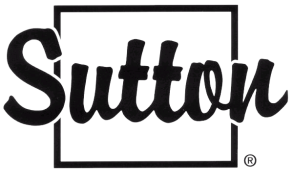Burglary is among the greatest concerns of most families and homeowners, yet home security is something many of us take for granted. Typically, it is only when we become aware of a disturbing incident – or suffer the personal trauma of being a victim – that we actually take steps towards making our homes more secure. The more common access areas, such as front, rear and garage doors are the preferred points of entry for a burglar. A proper security assessment will require a careful professional examination to identify the home’s unique critical areas.

Make An Entrance Examination
Every homeowner should take a close look at the obvious entry points of the home, and ensure they provide adequate protection for family members and their possessions. Typically, burglars seek the easiest and least visible point for illegal entry, such as garage doors and back doors. These doors are usually in darker or covered locations, and often can be compromised simply by breaking a glass panel or applying a swift kick to a weak area. Remember, if you make it difficult for thieves to enter your home, you can effectively discourage burglars and protect your possessions. Don’t invite burglars by offering an easy target. After all, if a break-and-enter requires too much work, skill or tools, the burglar will likely move on.
Standard Doors & Frames
A door is only as secure as its most vulnerable point, and the average door lock is often secured in only a lightweight doorjamb moulding, which might be torn away with a firm kick. Your door and frame should be as strong as possible, and firmly fixed to wall studs. The hinges and “strike area” (where the lock is embedded into the door frame) should be installed with long, heavy-duty screws. Ensure your entrance doors are made of strong solid-core wood or heavy-gage metal, and consider installing an extra chain lock and a wide-angle peephole.
Patio Doors & Security Bars
Sliding glass doors are secured by latches not bolts, so they’re more vulnerable to being forced open from the outside. However, such movement can be restricted by inserting a rigid bar or blocker into the slider track, or installing a hinged security bar that swings into place between the sliding panel (when closed) and the frame on the fixed panel side. Unfortunately, sliding doors can be lifted up and off their tracks and removed despite a bar, blocker, or latch lock. To prevent this, you should install an anti-lift pin that goes through the slider (when closed) and the fixed door panel. There are numerous locking and blocking devices available in most good quality hardware stores that will prevent a sliding door from being lifted or forced horizontally.
Think About Security Every Day
In addition to more secure doors and locks, it is also a good idea to be mindful of other security precautions, such as adequate outside lighting set to motion detection, and variable indoor lighting set to random timers. In addition to more secure hardware and equipment, better habits can go a long way to prevent criminals targeting your home. Make sure you don’t tip off burglars with obvious signs of absence such as an open garage, or stacked newspapers and mail. The more you think about security in your everyday life, the more you can do to protect your life from intrusion.
Your Real Estate Connection:
Marina Gavrylyuk
Real Estate Agent with Sutton Group Summit Realty
www.MarinaG.ca
Marina.Realtor
RentListingService.com – Condos and Houses for rent
CondoName.com – New and Resale Condos and Towns from Developers
Sales Representative
Sutton Group-Summit Realty Inc. Brokerage
1100 Burnhamthorpe Road West #27
Mississauga, Ontario, L5C 4G4
Cell: 416-843-1515 Tel.: 905-897-9555
Email: Marina@MarinaG.ca
Web: www.MarinaG.ca
Marina.Realtor


